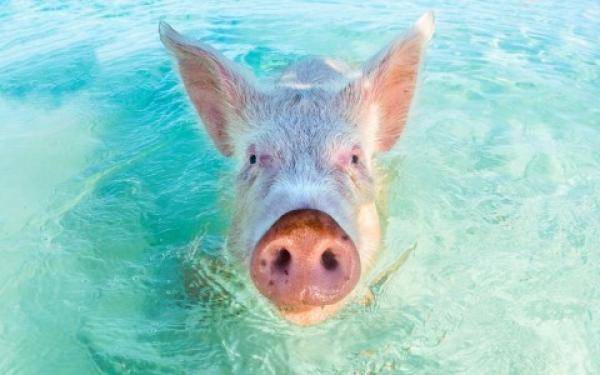Heat stress affects a multitude of production parameters in pig breeding. Most effects are obvious and immediately visible. But there are also longer term effects that are less readily associated with heat stress. These include the effects on the carcass composition of meat pigs and reduced reproductive results in sows. Because these effects only become visible later, it is important to intervene in time where possible. This might involve adjusting environmental and management factors, but the effects of heat stress can also be limited through diet.
[written by ir. Ewout van Lagen, Nutritionist Pigs]
The problem of heat stress
One of the measures that the animal, with its limited capacity for thermoregulation, already takes itself is to reduce its voluntary feed intake and thus its internal heat production. Reduced animal activity and lower basal metabolic rate help the animal to cope better with the heat, but unfortunately this almost always leads to reduced feed efficiency, increased fat deposition and reduced muscle mass formation.
During a period of heat stress, there are also changes in blood circulation. This moves mainly to the peripheral parts of the body. This attempt to get rid of extra heat leads to vasoconstriction of the visceral organs. The intestinal cells are particularly sensitive to this, resulting in an energy deficit and increased oxidative stress. This in turn can lead to a reduced intestinal barrier function. The risk of antigens and pathogens entering the body is increased, which in turn can trigger a local immune response. Therefore, in many cases, heat stress is accompanied by an immune response due to a leaky gut and an increased production of acute phase proteins.
The impact on sows is mainly visible in a reduced feed intake during lactation. This leads to greater condition losses and reduced oocyte development. A generally lower growth rate of the sow suggests that the sow's milk production is also reduced. Reduced intestinal integrity also affects fertility. The heat also affects the oestrus behaviour of sows. Sow farmers often record smaller litters and reduced piglet quality in the autumn. Lower IgG concentrations in colostrum and blood of the piglets are also reported by researchers. Heat stress during pregnancy can also be detrimental, particularly for embryonic survival... So most pig farmers are not waiting for a hot summer.
Coolpigs research project
Preventing heat stress calls for action and taking appropriate measures. But which measures should we take and how feasible are they, also from a practical and economic point of view? That is why the "Coolpigs" research project will soon be starting in Flanders. Through this project - which will run for four years - the researchers from ILVO and Ghent University want to arrive at a heat plan that can be applied on the farm, in the stables and during transport. The impact of heat stress will be mapped out and concrete measures will be tested with meat pigs and sows.
The researchers involved are already hoping for a warm summer! Below is a preview of possible measures that may qualify for further research.
Management measures
- Limit animal movements.
- Prevent overcrowding in the house (reduce absolute heat production, increase opportunities for comfortable lying and prevent overcrowding at feeding and drinking troughs).
- Limit animal handling (no more than strictly necessary).
- Move the inspection and feeding moments to the cooler parts of the day.
- Provide fresh drinking water and feed (including supplementary feeding for piglets in the farrowing house).
Some of the feed measures mentioned are combined in our Hittestress mix. TWM Hittestress mix supports the animal during hot days by providing the right balance of electrolytes and vitamin C, via feed or drinking water.
Want to know more? The DSM nutritionists would be happy to discuss this with you.


